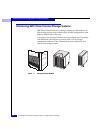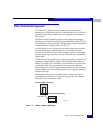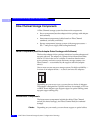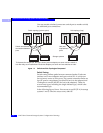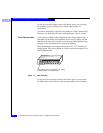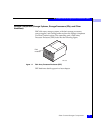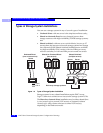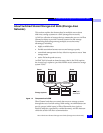
1
Fibre Channel Storage Components
1-5
About Fibre Channel Storage Systems and Networks (SANs)
The maximum length of copper cable is 30 meters (99 feet) between
nodes or hubs. The maximum length of optical cable between server
and hub or storage system is much greater, depending on the cable
type. For example, 62.5-micron multimode cable can span up to 500
meters (1,640 feet) while 9-micron single-mode cable can span up to
10 kilometers (6.2 miles). This ability to span great distances is a
major advantage of optical cable.
Some nodes have connections that require a specific type of cable:
copper or optical. Other nodes allow for the conversion from copper
to optical using a conversion device called a GigaBit Interface
Converter (GBIC) or Media Interface Adapter (MIA). In most cases, a
GBIC or MIA lets you substitute long-distance optical connections for
shorter copper connections.
With extenders, optical cable can span up to 40 km (25 miles). This
ability to span great distances is a major advantage of optical cable.
Details on cable lengths and rules appear later in this manual.
Fibre Channel Switches
A Fibre Channel switch, which is a requirement for shared storage (a
Storage Area Network, SAN) connects all the nodes cabled to it using
a fabric topology. A switch adds serviceability and scalability to any
installation; it allows on-line insertion and removal of any device on
the fabric and maintains integrity if any connected device stops
participating. A switch also provides host-to-storage-system access
control in a multiple-host shared-storage environment. A switch has
several advantages over a hub: it provides point-to-point connections
(as opposed to a hub’s loop that includes all nodes) and it offers
zoning to specify paths between nodes in the switch itself.








